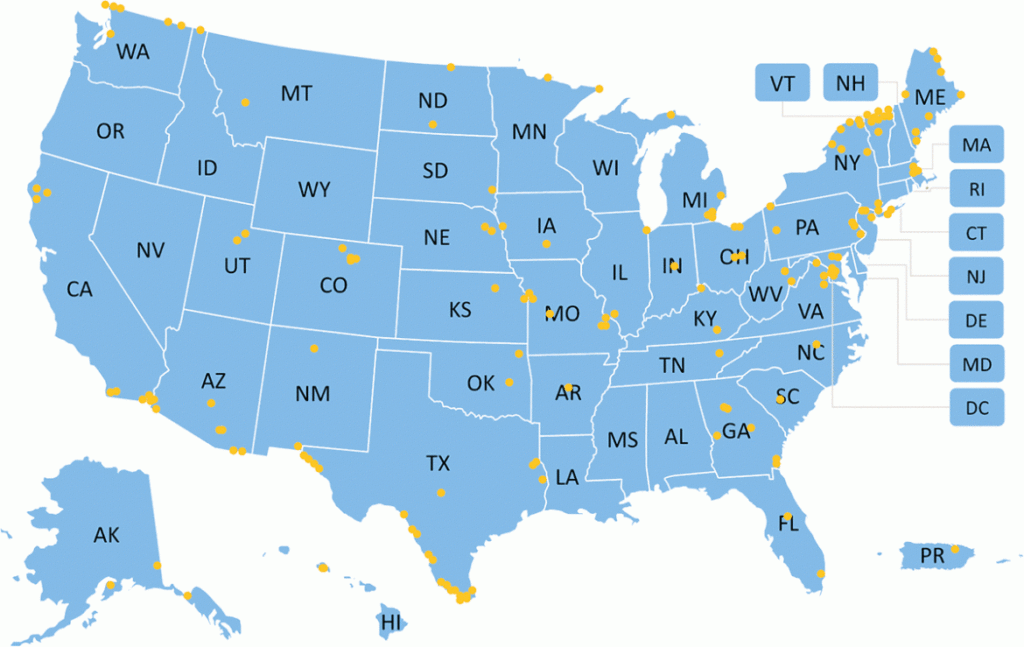The U.S. General Services Administration (GSA) announced a $2 billion investment for more than 150 construction projects that use cleaner construction materials, known as “low-embodied carbon” (LEC) materials, as part of the Biden administration’s Investing in America agenda. The funding will support projects at federal facilities across 39 states, the District of Columbia, and the Commonwealth of Puerto Rico.

Asphalt, concrete, glass, and steel are some of the most carbon-intensive construction materials—accounting for nearly half of all U.S. manufacturing greenhouse gas (GHG) emissions, and representing 98% of the construction materials purchased and funded by the government for its infrastructure investments.
The Inflation Reduction Act—the largest climate investment in history—provided $3.375 billion for the GSA to invest in federal buildings to help reduce carbon emissions and catalyze innovation, primarily by acquiring and installing LEC materials for construction projects. The announcement also furthers the Biden administration’s Buy Clean Initiative.
‘Leading By Example’
GSA Administrator Robin Carnahan announced the investments alongside a White House senior advisor during a visit to Topeka, Kan., as part of the Investing in Rural America Event Series.
In Topkea, the GSA plans to invest about $25 million for LEC construction materials to help the Frank Carlson Federal Building and Courthouse reduce its GHG emissions while improving efficiency, safety, and comfort. The GSA will replace the windows and doors with blast-resistant aluminum frames and insulated LEC glass that will reduce the building’s energy use and extend the building’s useful life. The concrete pavement sidewalks and parking area will be upgraded with LEC concrete to sustainably address deterioration, correct tripping hazards, and improve accessibility. The project is slated to be designed this fiscal year, with construction in 2025.
Carnahan said, “By incorporating clean construction materials in more than 150 projects across the country, we’re helping create good-paying jobs in the clean manufacturing industries of the future and sending a clear signal that the homegrown market for these sustainable products is here to stay.”
John Podesta, Senior Advisor to the President for Clean Energy Innovation and Implementation, said, “Today’s announcement from GSA shows that the federal government is leading by example on tackling the climate crisis by spurring demand for low-carbon manufacturing.”
Projects
The GSA has identified over 150 federal government buildings projects that will prioritize the procurement of LEC materials. This includes:
- $384 million for asphalt;
- $767 million for concrete;
- $464 million for glass; and
- $388 million for steel.

The array of investments include façade and window replacements, structural repairs, repaving projects, and seismic upgrades in buildings ranging from the historic Alexander Hamilton U.S. Custom House in New York City and the Henry M. Jackson Federal Building in Seattle, to land ports of entry across the northern and southern borders. Through the life of the projects, these investments are estimated to reduce up to 41,000 metric tons of GHG emissions and support over 6,000 jobs annually.
The projects mark another step toward achieving President Joe Biden’s federal sustainability goals, including a net-zero emissions federal building portfolio by 2045 and net-zero emissions procurement by 2050.
The projects will be informed by lessons learned from GSA’s pilot, launched in May and running through November. The pilot implemented the U.S. Environmental Protection Agency’s (EPA) Interim Determination, which established the definition of “substantially lower” GHG emissions based on Environmental Product Declarations.
“EPA is thrilled to be partnering with GSA and other federal agencies to support construction projects that cut harmful climate pollution, protect public health, and help grow the economy in communities across our county,” said EPA Deputy Administrator Janet McCabe. “At EPA, we are also working with the construction materials manufacturing industry and NGOs to help track the climate impacts of their operations and to develop a labeling program that will clearly identify lower-carbon construction materials in the marketplace.”
View the full list of over 150 LEC projects here.
ALSO READ: 4 Values to Look for When Working with Green Construction Companies
